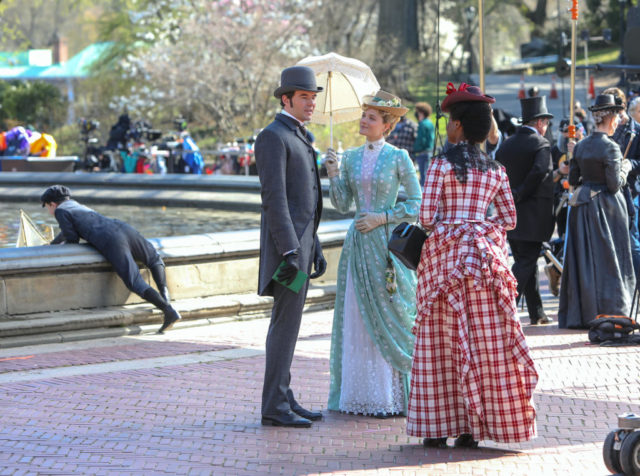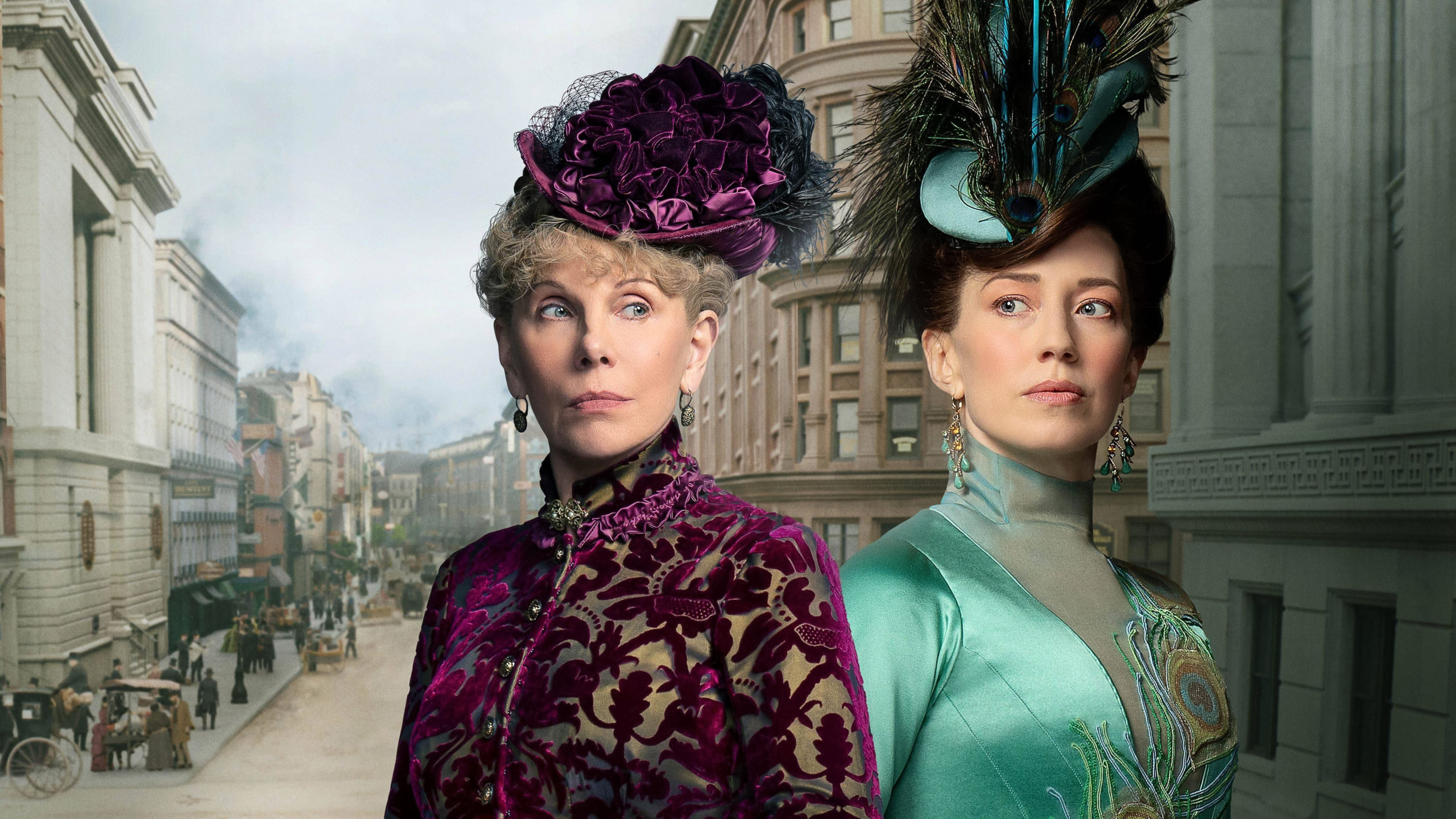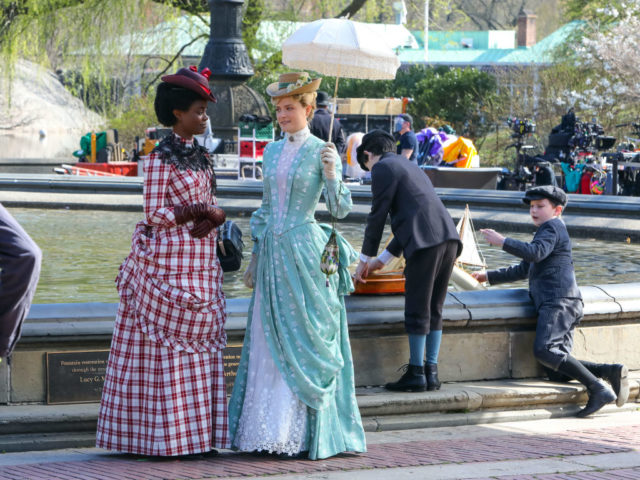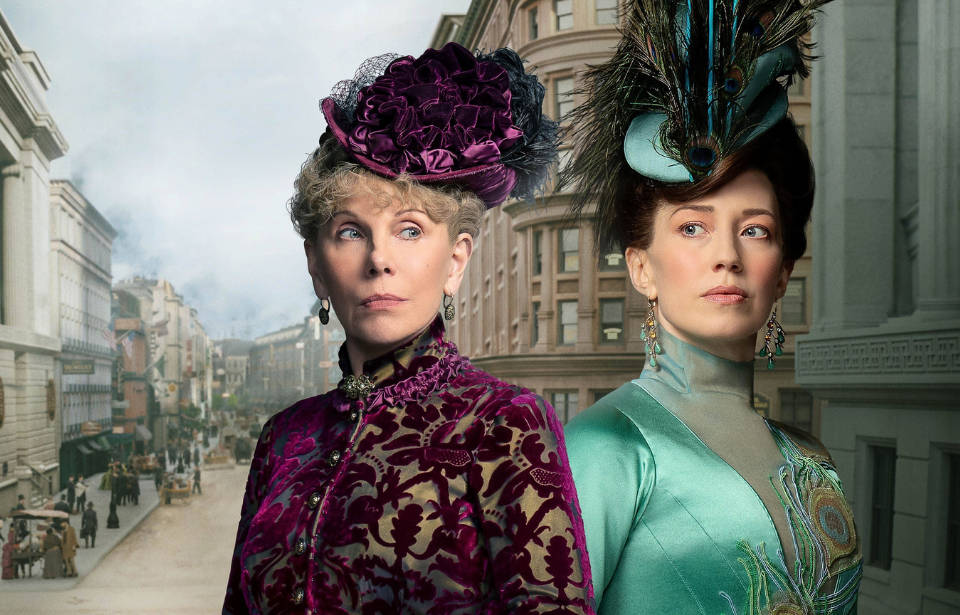The United States of America was a modern yet traditional new country in its infancy. It was modern because it was the first colony to break away from Britain and set up its new government. Yet it was traditional because for many years after gaining independence, so few social trends changed. The ‘Gilded Age’ changed all that. From the Civil War to the start of the twentieth century, the United States went through a period of significant growth that allowed tycoons and politicians to grow incredibly wealthy and gain substantial power. The popular HBO series The Gilded Age is based on this wealth and power.
HBO’s The Gilded Age

HBO’s 2022 period piece follows a young woman named Marian Brook, originally from rural Pennsylvania. After her father’s death, she moves to New York City to live with her aunts.
The two primary (fictional) families involved in the storyline of The Gilded Age are the van Rhijns and the Russells. Christine Baranski plays Brook’s aunt, Agnes van Rhijn, a wealthy widow coming from “old money.” Like many of the other old money Manhattanites, van Rhijn wants to uphold her family’s reputation from the colonial era.

The Russell family builds a mansion directly across the street from the van Rhijns. The Russell family represents the industry-driven “new money” coming into New York during the Gilded Age. They made their fortune from George Russell (played by Morgan Spector), a railroad tycoon.
The Russells are determined to join the upper echelons of New York society, which was famously closed to any newcomers. The family spends lavishly to buy their way into this old money club. But in doing so, the Russells didn’t take consider their neighbors’ traditions or values.
Everything about the Russells – specifically Bertha Russell (Carrie Coon) – offends Agnes van Rhijn. Agnes takes it upon herself to convince her friends and social group to conspire against the Russells.
How does the series stack up to the real Gilded Age?

Although the Russells and van Rhijns are fictional families, their struggles and experiences reflect the reality of the Gilded Age. The central conflict in The Gilded Age is the fight between old and new money. In 1882 (when the television show is set), the United States was very young. Old European countries had monarchies, royal titles, and well-established powerful families. On the other hand, families in the US used their money to gain power. However, as the show depicts, money does not always equal power, depending on how one earns their wealth.
Old money families would often be gatekeepers of New York’s high society. One real-life family that was notorious for this practice makes an appearance in HBO’s Gilded Age – the Astor family. During the nineteenth century, it was common practice for women to leave calling cards at the homes of the elite in order to be put on a “visiting list.” In The Gilded Age, Bertha Russell leaves a calling card for Mrs. Astor, who in turn throws it into the fire without a second thought.

Other real-life individuals pop up in the fictional television show. Stanford White, an architect who built the Russells’ New York mansion, was a real person who designed the majestic Rosecliff Mansion in Newport, Rhode Island, and the Washington Square Arch in New York City.
Real-life author Ward McAllister also makes an appearance in the television show. In 1892, the real McAllister famously observed that New York’s high society included only 400 “rightful” members. Of course, the Astor family is based on the real Astors. The first season of The Gilded Age also introduces Clara Barton, the founder of the American Red Cross.
Racial tensions in the Gilded Age

One notable aspect of both the real-life gilded age and the new television show is the role of racial tensions in The United States. The real Gilded Age saw the collapse of Reconstruction and the solidification of legal segregation in the United States. However, the Gilded Age also gave rise to a Black elite and middle class – especially in New York City.
The Gilded Age shows racial tensions throughout this era and gives the viewers the perspective of Black citizens’ experience in New York. According to Erica Armstrong Dunbar, the show’s historical consultant and co-executive producer, who is also a historian of the African-American experience, the Black elite and middle class “are really absent from film and television” depictions of the Gilded Age.

The real-life T. Thomas Fortune makes an appearance in the first season of The Gilded Age. Fortune became the most influential Black newspaperman of the Gilded Age, running and editing The New York Age. He used his platform to denounce racism, segregation, and lynching.
More from us: 15+ Heroic Facts About Clara Barton
Race relationships are also highlighted through the storyline of two fictional characters in The Gilded Age – Marian Brook and Peggy Scott (played by Denée Benton). Marian Brook is Anges’ niece, and Peggy is a young Black writer who befriends Marian. The van Rhijn family employs Peggy, and she works as a secretary for Agnes. The van Rhijns’ staff members are split in their opinion of Peggy. Some believe she should be given proper employment, while others think she (along with other Black people) is trying to take over their jobs and should not be trusted. These feelings are very representative of different mindsets throughout the United States during the Gilded Age.
